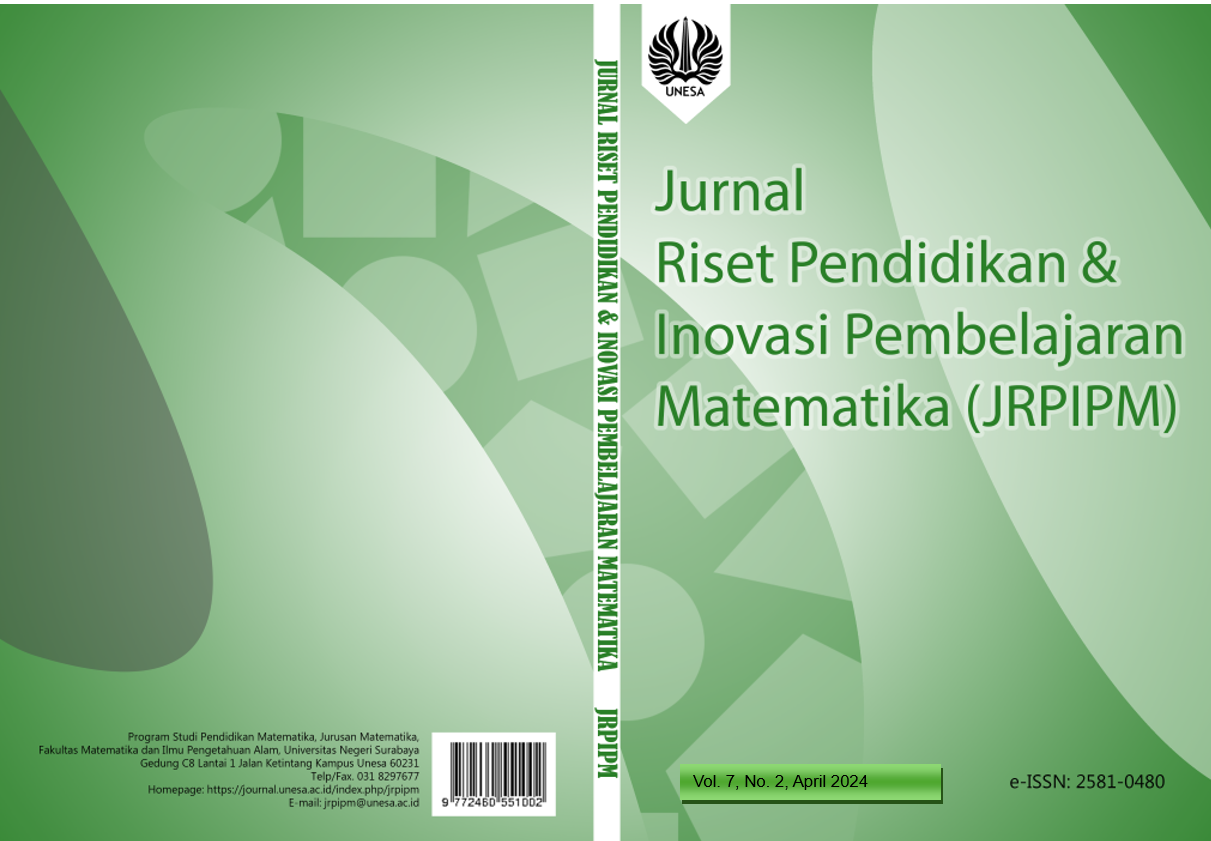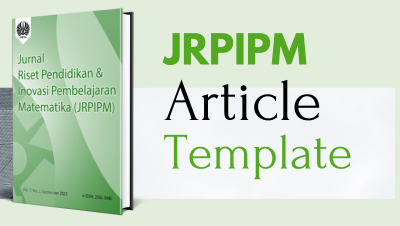The Failure of National Madrasah Science Competition Students in Solving Islam-Integrated Mathematics Problem on Triangle Material
DOI:
https://doi.org/10.26740/jrpipm.v7n2.p151-170Keywords:
Mathematics Problem Failure, Madrasah Science Competition, Islamic Integrated Mathematics, TriangleAbstract
Students, especially madrasah students, need to master Islamic integrated mathematics problem-solving. However, many madrasah students need help to solve Islamic-integrated mathematics problems. The failure occurs in one part and several interrelated parts of the solution. Therefore, this study aims to explore the failure of madrasah science competition students at the national level in solving Islamic integrated mathematics problems on triangle material. The research was conducted qualitatively on 29 students at the Madrasah Tsanawiyah (MTs) or equivalent level who participated in the national madrasah science competition, and they failed to solve Islamic integrated mathematics problems on triangle material. The research instrument was a triangle problem given during the National Madrasah Science Competition (KSM) in 2023. The results showed five categories of failure: failure to provide a correct and complete process, failure to integrate Islamic values, failure to use mathematical concepts, failure to use mathematical principles, and failure to apply relevant strategies. This research contributes to teachers by characterizing student failures that can be used as a guideline in designing learning strategies that can overcome student failures. In addition, teachers can provide scaffolding to students according to the type of failure.
References
Alghar, M. Z. (2022). Proses berpikir analitis mahasiswa matematika dalam menyelesaikan masalah matematika berdasarkan teori APOS ditinjau dari jenis kelamin. Universitas Islam Negeri Maulana Malik Ibrahim.
Amalia, D., Noviani, D., Djamali, M. F., & Rofiki, I. (2021). Exploring mathematical concepts and philosophical values in Jember Batik. Abjadia: International Journal of Education, 6(2), 144-159. https://doi.org/10.18860/abj.v6i2.13119
Huda, N., Sutawidjaja, A., & Rahardjo, S. (2018). The errors of metacognitive evaluation on metacognitive failure of students in mathematical problem solving. Journal of Physics: Conference Series, 1008(1), 12073. https://doi.org/10.1088/1742-6596/1008/1/012073
Mulyati, S. (2000). Geometri euclid. Malang: JICA.
Subanji. (2015). Teori kesalahan konstruksi konsep dan pemecahan masalah matematika. Universitas Negeri Malang.
Subanji. (2016a). Teori berpikir pseudo penalaran kovariasional. Universitas Negeri Malang.
Subanji. (2016b). Teori defragmentasi struktur berpikir dalam mengonstruksi konsep dan pemecahan masalah matematika. Universitas Negeri Malang.
Sulistyawati, E., & Rofiki, I. (2022). Ethnomathematics and creativity study in the construction of batik based on fractal geometry aided by GeoGebra. International Journal on Teaching and Learning Mathematics, 5(1), 15-28. https://doi.org/10.18860/ijtlm.v5i1.10883
Undang-Undang Republik Indonesia. (2003). Sistem pendidikan nasional. Pemerintah Republik Indonesia.
Downloads
Published
How to Cite
Issue
Section
 Abstract views: 325
,
Abstract views: 325
, PDF Downloads: 255
PDF Downloads: 255







